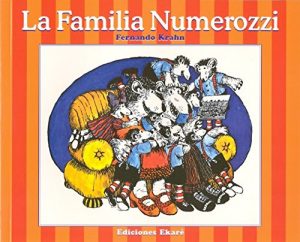 With eight kids and somewhat extravagant parents, the Numerozzis are not your typical family. Readers will have a good laugh as they wach them prepare to leave the house in the morning.
With eight kids and somewhat extravagant parents, the Numerozzis are not your typical family. Readers will have a good laugh as they wach them prepare to leave the house in the morning.
Chile
Isabel Allende: Recuerdos Para Un Cuento / Isabel Allende: Memories For A Story

A simple description of the childhood and youth of the Chilean author Isabel Allende.
The Killer’s Tears
On the afternoon when Angel Allegria arrives at the Poloverdos’ farmhouse, he kills the farmer and his wife. But he spares their child, Paolo, a young boy who will claim this as the day on which he was born. Together the killer and the boy begin a new life on this remote and rugged stretch of land in Chile. Then Luis Secunda, a well-to-do and educated fellow from the city descends upon them. Paolo is caught in the paternal rivalry between the two men. But life resumes its course, until circumstances force the three to leave the farm. In doing so, Angel and Luis confront their pasts as well as their inevitable destinies; destinies that profoundly shape Paolo’s own future.
When It’s Six O’clock in San Francisco: A Trip through Time Zones
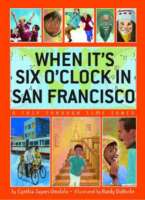
A lyrical multicultural picture book that introduces the concept of time zones. As one little boy is eating breakfast in San Francisco, another kid in London is playing football with his mates, a girl in Harare is eating dinner with her family, and another child in Sydney is calling for a drink of water in the middle of the night. Poetic language and charming vignettes simplify the concept of time zones by providing glimpses into the everyday lives of children around the world.
Mia’s Story: A Sketchbook of Hopes & Dreams
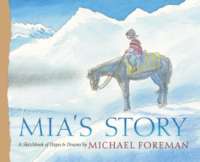
From award-winning picture book artist Michael Foreman comes the uplifting tale of a girl whose search for a lost puppy leads to some wondrous wildflowers — and a magical way to transform her barren village. In a bleak little village in Chile, Papa comes home from his day of selling metal scraps with a wonderful surprise for his daughter, Mia. It’s a puppy she names Poco, who follows the little girl everywhere — until one day, as puppies will do, Poco wanders away. As Mia searches for her pup, she finds herself all alone at the top of the highest mountain, where she gathers a clump of snow-white flowers to plant by her home. Soon Mia’s fragrant flowers have spread through the village and blanketed the once-ugly dump. Before long, she is selling her flowers in the city square, telling crowds of customers that “they come from the stars.” But wherever the flowers are, Mia is always reminded of Poco. Is it possible the flowers may bring back her beloved dog after all?
Take a closer look at Mia’s Story as examined in WOW Review.
The Composition
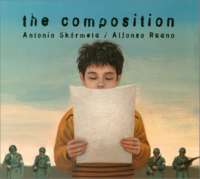
In a village in Chile, Pedro and Daniel are two typical nine-year-old boys. Up until Daniel’s father gets arrested, their biggest worry had been how to improve their soccer skills. Now, they are thrust into a situation where they must grapple with the incomprehensible: dictatorship and its inherent abuses. This sensitively realized story touches a nerve and brings home the uncomfortable fact that some children do encounter issues of this magnitude. Here, deft realism is brought to the page by Antonia Skarmeta’s story and the edgy drawings of Alfonso Ruano, portraying a child’s view of a repressive society. The Composition is a winner of the Americas Award for Children’s Literature and the Jane Addams Children’s Book Award.
This book has been included in WOW’s Kids Taking Action Booklist. For our current list, visit our Boolist page under Resources in the green navigation bar.
To Go Singing Through the World: The Childhood of Pablo Neruda
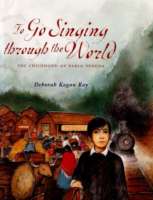
Pablo Neruda grew up in the rough and wild frontier town of Temuco, Chile. His father was a railroad man and not inclined to draw out the introspective boy. However, his stepmother, descended from the Mapuche people, was gentle and nurturing and told him stories of Chile’s native people. But in her husband’s presence, she was as silent as Pablo. So the child found refuge in nature and in books. And secretly he wrote down his thoughts. With the encouragement of Gabriela Mistral, an award-winning poet, teacher, and friend, Neruda’s writing grew resonant and powerful. At age sixteen he left Temuco for the university in Santiago and went on to become the “people’s poet” and to win the Nobel Prize in Literature. Blending her telling of Neruda’s childhood with excerpts from his own poetry and prose, Ms. Ray captures the people and places that inspired him in her rich watercolor illustrations.
In the Land of the Jaguar: South America and Its People
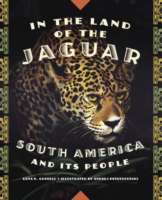
South America’s story is as varied as its geography of soaring mountains, scorching deserts, and lush rainforests. This book combines an often tragic history with the problems and triumphs of the present. The information ranges from “the Requirement” (a document read out by the conquistadors each time they came upon a new group of indigenous people to justify their actions) to drug cartels, from the hidden and secretive Elders (a civilization that retreated to the mountains to preserve its customs) to Gabriel García Márquez. Includes maps, an index, and bibliography.
Chile (Discovering Cultures)
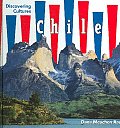
Comprehensive information on the geography, history, governmental structure, economy, cultural diversity, peoples, religion, and culture of Chile.
Chile
Informational book about Chile
